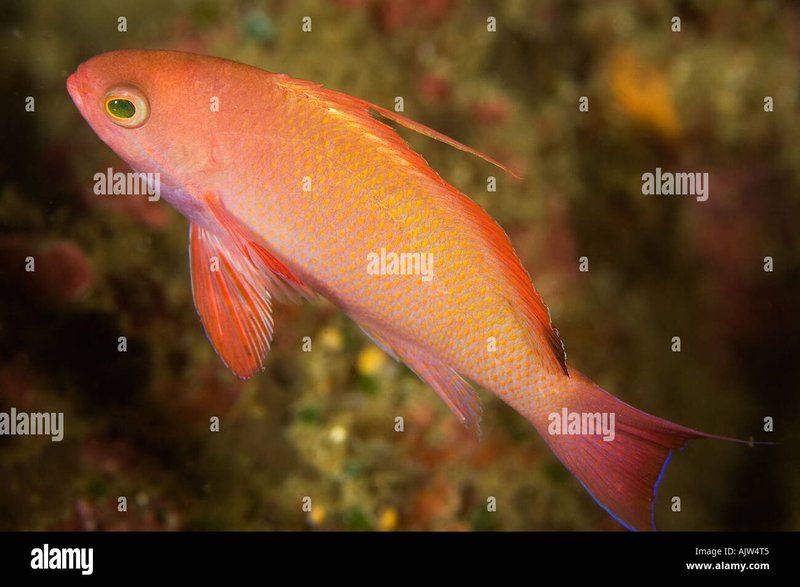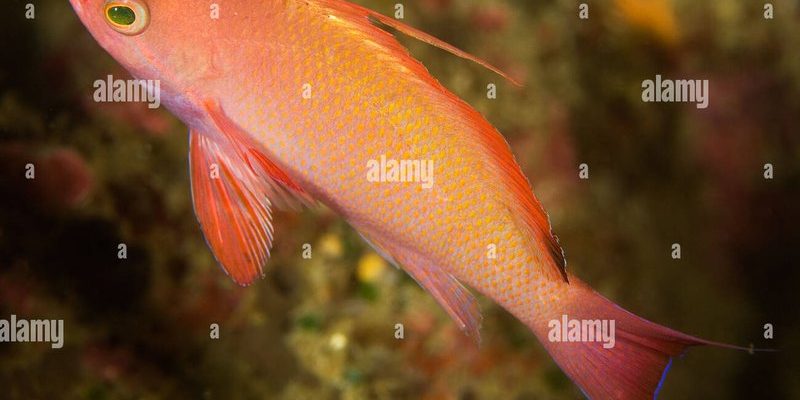
Think of anthias as the extroverts of the fish world. Unlike many species that prefer to stay hidden in the shadows, anthias thrive in groups, showing off their chattiness and vibrant personalities. They inhabit tropical coral reefs, where they engage in a colorful dance of social interactions. Whether you’re a beginner marine enthusiast or contemplating adding these fish to your aquarium, understanding their behavior is essential.
In this guide, we’ll explore everything from their social dynamics to their feeding behaviors. By the end, you’ll have a clearer picture of what it means to have anthias in your underwater world. Trust me, these little fish have a lot more going on than meets the eye!
What Are Anthias Fish?
Anthias fish belong to the family Serranidae, which also includes groupers. There are several species of anthias, each showcasing a vibrant palette of colors—think bright pinks, yellows, and oranges. They’re mostly found in shallow, warm waters of the Pacific and Indian Oceans, often hovering around coral reefs.
One of the most popular species is the Lyretail Anthias, known for its striking features and lively demeanor. Anthias are considered relatively small, reaching up to about 3 inches in length. Their compact size makes them perfect for aquarium life, especially for those aiming to create a lively, colorful enviroment.
What’s really interesting about these fish is their unique social structure. They often form schools, which not only helps them feel secure from predators but also allows for complex social interactions. They communicate through body language and color changes, showcasing a vibrant communication system that’s captivating to observe.
Social Behavior of Anthias
Anthias are famously social creatures. They typically live in harems, where one male will be accompanied by several females. This hierarchical structure is an integral part of their social behavior. When you observe a school of anthias, the interactions can be both fascinating and educational.
The male anthias can be quite territorial, often displaying dominant behaviors to maintain his status. You might see him puffing up or flashing bright colors to impress the females and ward off rivals. The females, on the other hand, tend to be more passive and frequently engage in foraging for food.
The dynamics of a school can change quickly. If the dominant male is removed or dies, a female can genetically change into a male, stepping up to fill that role. This adaptability is a remarkable aspect of their behavior, showcasing their resilience and social complexity.
Feeding Habits and Patterns
Feeding is one of the most crucial aspects of an anthias’s life. They are primarily planktivorous, meaning they mainly feed on plankton. In their natural habitat, they’ll often hover near coral reefs, waiting to snap up tiny organisms carried by the currents.
In an aquarium setting, it’s essential to mimic their natural diet. You can feed them high-quality flake foods, frozen or live brine shrimp, and other small-sized foods. It’s best to feed them several times a day in small amounts to meet their energetic needs.
You might wonder how their feeding behavior ties into their social structure. In groups, anthias tend to exhibit synchronized feeding patterns. They’ll often swim in unison, hovering together and darting in as a wave of color to catch tiny prey. Watching this can be mesmerizing, adding to the charm of having them in your aquarium.
Temperament and Compatibility
Anthias are generally known for their peaceful demeanor, making them excellent candidates for community tanks. However, like any fish, their behavior can vary based on their environment and tank mates. As a rule of thumb, they do best with other non-aggressive species.
When adding anthias to your aquarium, ensure that your other fish are compatible. Avoid pairing them with overly aggressive species, as this can lead to stress and unhealthy environments. They thrive in schools of at least three or more, which helps not only with their behavioral needs but also with their overall health.
If you’re planning on keeping multiple anthias, consider having one male and a few females. This setup minimizes conflicts and allows for a more harmonious living situation. Remember, a happy anthias is often a well-fed and well-socialized one.
Stress Factors in Anthias
Like any fish, anthias can experience stress, which can significantly impact their health and behavior. Common stressors include poor water quality, overcrowding, and aggressive tank mates. If you notice your anthias hiding or displaying muted colors, it could be a sign that they’re feeling uneasy.
Maintaining high water quality is key. Perform regular water changes and monitor pH levels, temperature, and ammonia levels to ensure they remain stable. This is crucial for the overall health of your fish and can prevent many stress-related issues.
Another way to reduce stress is to provide plenty of hiding spots and spacious areas in your aquarium. Use rocks and coral structures to create a natural environment that allows anthias to feel secure. By ensuring their comfort, you’ll encourage their vibrant behavior to flourish!
So, why does all this matter? Understanding the behavior and temperament of anthias isn’t just for aquarium enthusiasts. It’s about creating a thriving community for these beautiful fish that reflect their natural environment.
Knowing how they socialize, what they eat, and how to minimize stress helps you become a better aquarist. You’ll not only keep your anthias healthy but also enjoy their vibrant personalities and interactions.
Next time you see these fish, whether in a tank or in the wild, you’ll appreciate all the intricacies behind their lively antics. It’s this understanding that enhances your relationship with your aquatic companions, making your underwater experience even richer. So, grab your gear and dive into the colorful world of anthias, where every day is an adventure waiting to unfold!

